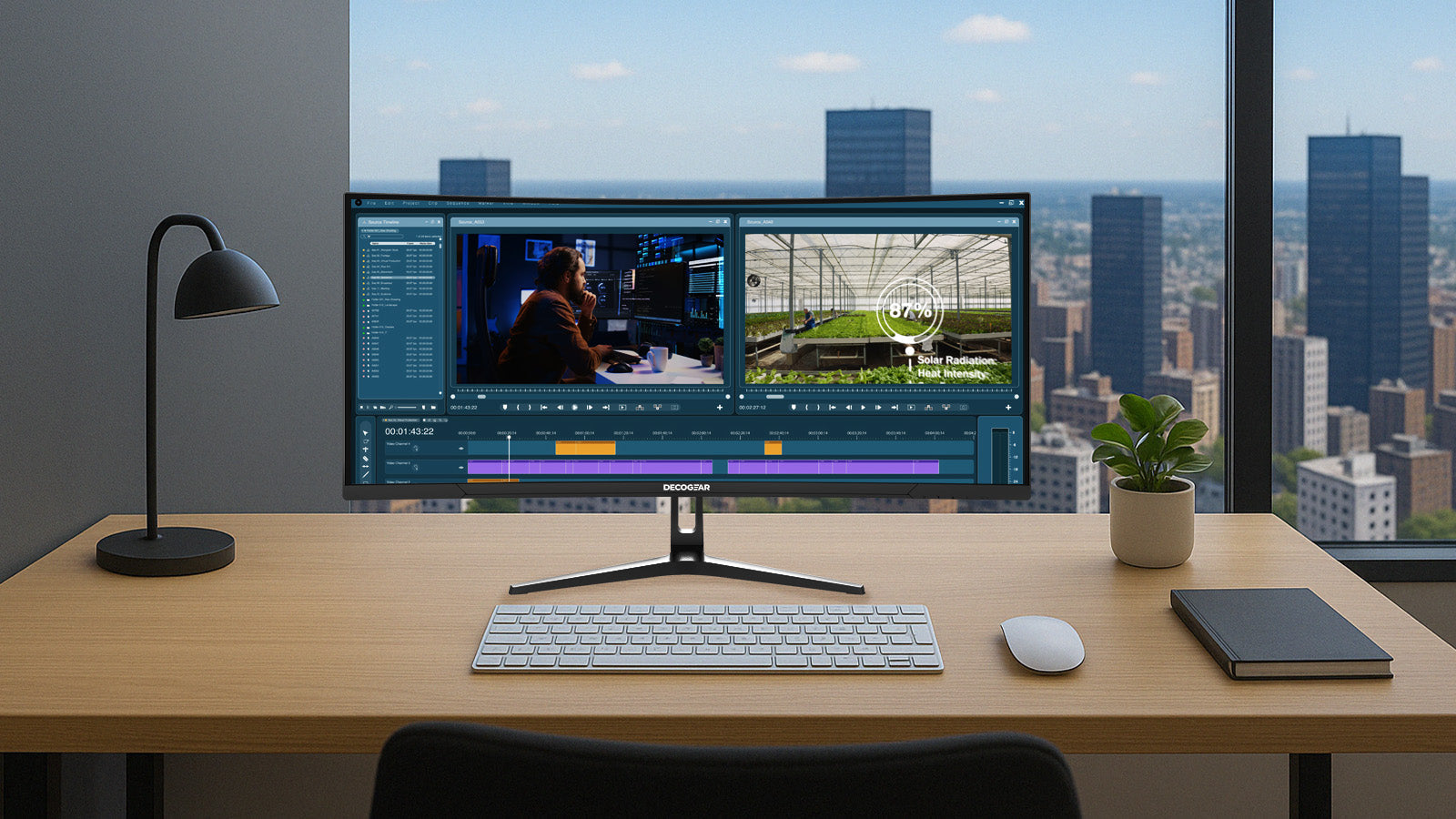Are you a home user? Are you a professional user? Are you a gamer? Maybe a little of all three? Looking for a great PC Monitor? Well you need an HDR Monitor to support HDR content. A monitor having a display technology that can produce a high dynamic range of the color space in the wide color gamut, with a high range of colors in the SRGB or DCI-P3 range. A 4k HDR display will produce amazing pixel count and HDR Content. DCI-P3 is a wider color standard than regular SRGB, which could account for its recent surge in popularity with gamers.
There a several different variations of 4K monitors which usually offer a high quality 4K HDR experience. Some 4k HDR monitors with amazing specs, are geared towards more of a PC Gaming purpose like an HDR Gaming Monitor with low latency, response time and looking for an amazing refresh rate of at least 120 Hz or 120 FPS.
Absolutely a must for example when using an Xbox. Gaming monitors or even regular monitors used for home or work can be found in an OLED version (Organic Light Emitting Diodes) for deep blacks (or Samsung’s name for it QLED), IPS, LCD, LED backlight with local dimming. There is also the HLG standard which is the “HDR” standard that are usually broadcast from Cable or TV channels. We will discuss this in more detail below.
Gaming Monitors are also great for work. As 4k HDR Gaming Monitors have some of the best specs on the market, they will fit all you work needs or even casual home needs as well. Typical 4k HDR monitors and HDR TVs can be found with some of the best black levels, brightness levels producing the most lifelike highest image quality available.
Many HDR monitors come with the ability to be wall mounted using a VESA mount. Please consult your monitor’s user manual to determine the dimensions of the VESA mount brackets and screws that fit your HDR display.
HDR Standards
The main HDR standards for recording and playing HDR video are HLG, HDR 10, HDR 10+, and Dolby Vision.
HLG: HLG is an HDR format used for video and still images. uses the HLG transfer function, The format is backwards compatible with SDR (Standard Dynamic Range) UHD monitors.
HDR 10: The most common of the HDR formats and is not backward compatible with SDR displays. With a maximum peak brightness of 10,000 nits, HDR10 content is usually made with a peak brightness between 1000 and 4000 nits.
HDR10 lacks dynamic metadata. On HDR10 displays that have lower color volume than the HDR10 content (such as lower peak brightness capability), the HDR10 metadata provides information to help the display adjust to the video. The metadata is fixed based off each video or movie.
HDR 10+: Basically the same format as HDR10 but with the addition of a system of dynamic metadata. This is does not come with the same cost as the competing Dolby Vision.
Dolby Vision: Dolby Vision offers a better picture quality with amazing contrast ratio, gives additional creative ability to the content creator for movies, shows and games.
DTX a leading competitor of Dolby also developed DTS:X which offers an alternative to the high end HDR standard of Dolby Vision. Although please note that Dolby Vision is more commonly found on content than DTS.
There are other (some older) HDR Monitor standards such as displayhdr 400, displayhdr 600, and even the VESA Display HDR which contains global dimming improving dynamic contrast ratio with a peak luminance of 400 cd/m2. This is an up to 50% upgrade over SDR.
Benefits of an HDR Monitor
Connectivity. An HDR Display will usually offer HDMI 2.0 capabilities to quicken response time and image quality to the monitor from the device. USB Ports even USB-C ports are often offered on 4K HDR Monitors.
Wall mounting via a VESA wall mount is more common now as many people like to have their monitors wall mounted versus on a swivel stand.
4k HDR monitors to interact properly with the attached device, whether it be a PC, Smartphone, Cable Box, etc. needs to have a great GPU. Two of the main graphics card makers which you may find on an HDR display are made by Nvidia, AMD and Intel.
Lifelike image quality is going to “jump off the screen” with a 4k HDR display. Imagine how much easier, more comfortable and enjoyable viewing experience. From personal experience with working from home and being an avid gamer, there is nothing like immersing yourself into the image that your new 4k HDR display will provide.
From low latency, great brightness levels with high nit rates, blazing refresh rates to keep a smooth and blurry free image, deep blacks and excellent contrast ratios, you can’t go wrong. Even when gaming with a highly intensive fast moving game (such as sports games) you will notice an amazing difference and the overall experience will be greatly improved.
Picks for the Best HDR Display
As we love Ultrawide Curved HDR Monitors due to the viewing angles, ergonomic comfort and immersion, we would like to recommend our favorite 4k HDR Monitor the Deco Gear 49" Curved Ultrawide E-LED Gaming Monitor, 32:9, 3840x1080, 144Hz, 3000:1

Here are a sampling of the specs of this curved monitor.
-
Price. This curved ultra wide is amazing for the price point
-
Great aspect ratio 16:9 in 2560 x 1440 ultimate high resolution viewing with great pixel count
-
49” inch monitor provides for a large immersive experience and reduced eye strain.
-
Unbelievably fast refresh rate of 144 Hz for a smooth high image quality viewing experience
-
3000:1 contrast ratio for excellent visuals with a screen ratio of 3840 x 1080
-
ELED backlight
-
Supports DisplayHDR 400
-
HDMI 2.0 display port with adaptive sync (like g-sync or freesync)
-
USB-A, USB-C connectivity port and USB-C with power delivery up to 65W max
-
Fantastic for gamers as well being used as a gaming monitor or for the professional work curved monitor
Another of our recommended monitors is the Deco Gear 39" Curved Ultrawide Gaming Monitor, 2560x1440, 1ms MPRT, 165 Hz, 16:9, HDR400, 4000:1
Below are some of the fantastic specs of this monitor:
-
Price. This curved ultra wide is amazing for the price point
-
Great aspect ratio 16:9 in 2560 x 1440 ultimate high resolution viewing with great pixel count
-
39 inch monitor provides for a large immersive experience and reduced eye strain.
-
Unbelievably fast refresh rate of 165 Hz
-
4000:1 contrast ratio for excellent visuals
-
16.7 million colors accurately displayed.
-
99% srgb color gamut
-
ELED backlight
-
350 nits of peak brightness
-
HDMI 2.0 display port with adaptive sync of freesync.
-
USB-A, USB-C connectivity port and USB-C with power delivery up to 65W max
-
R3000 curvature of screen real estate for fantastic viewing angles and long viewing sessions with a comfortable ergonomic feel to reduce strain.
Another recommendation for a tremendous HDR Monitor include the budget friendly Deco Gear 27-Inch 2560x1440 Curved Gaming Monitor. It comes with DisplayHDR400, 16:9 aspect ratio, 3000:1 contrast ratio, and a blazing fast refresh rate of 144Hz.
In conclusion, with the advances in technology in PC’s, gaming devices, smartphones and other devices it is imperative that your monitor keep up with high image quality content. Whether you are streaming movies or TV shows, playing intensive immersive gaming or even working on a high display presentation for work, a 4k HDR monitor is a must have for all of your viewing needs.




Share:
Ultrawide Curved Monitor Guide
What Makes a Good Gaming Monitor